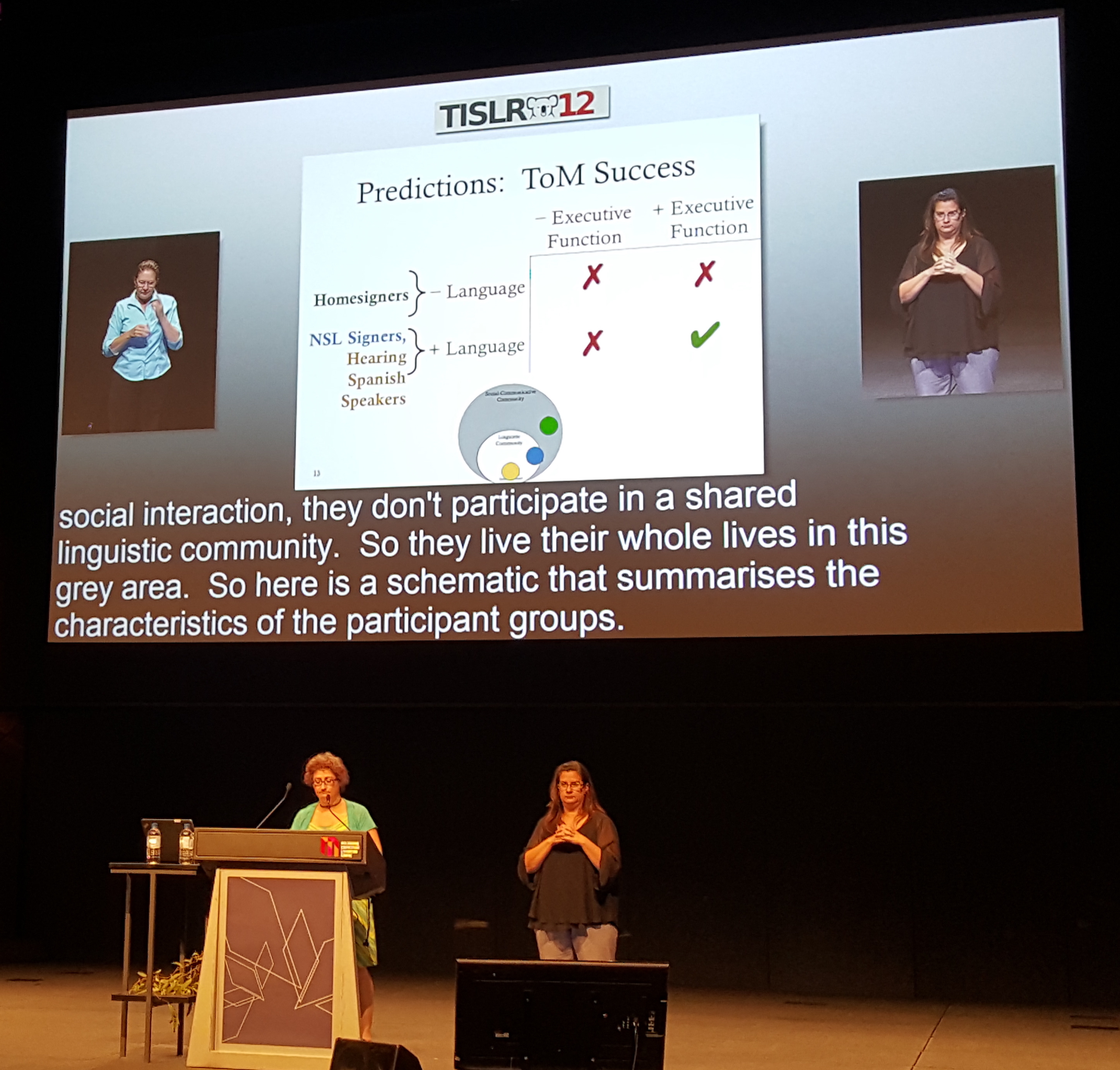This January, Dr. Marie Coppola and Deanna Gagne presented at The 12th International Conference on Theoretical Issues in Sign Language Research (TISLR12) in Melbourne, Australia. Their three presentations involved Theory of Mind and False-Belief research on signers of Nicaraguan Sign Language, Homsigners, and Spanish speakers as well as an investigation of spatially modified quantifiers in ASL.
The presentation “Disentangling Language and Education Effects on False Belief Understanding: Evidence from Homesigners, Signers, and Unschooled Spanish Speakers” by Deanna Gagne, Marie Coppola, and Anna Shusterman investigated the effects of language background and education on Theory of Mind by studying three groups: Homesigners, NSL-Signers, and unschooled Spanish speakers. The study found that success on a False-Belief task was contingent on the presence of a language community, and that education, language background, and inhibitory control executive function were all related to performance on the task.
“Leveraging First-Hand Experience to Assess Theory of Mind Development in Deaf Populations with Limited Sign Language Ability” by Jennie Pyers, Deanna Gagne, Ann Senghas, and Marie Coppola also looked at Theory of Mind among Homesigners and NSL-Signers. The study used a unique False-Belief task that was minimally verbal and that provided training and experience for participants. Significant differences were found between the performance of Homesigners and groups of NSL-Signers, providing evidence for the crucial role of language in Theory of Mind.
Deanna Gagne and Kathryn Davidson’s presentation “Overt Domain Information in American Sign Language Reveals Gestural Origins and Sheds Light on Semantic-Syntactic Structures Cross Modally” explored the use of spatially modified quantifiers in ASL and their implications. In ASL, quantifiers that are signed lower are interpreted as having a more restricted domain, while quantifiers signed higher, near the head, are interpreted as having a wider domain. The authors argued that an incorporated pronoun is responsible for quantifier domain information. In addition, they presented evidence that hearing individuals using gestures also use height to convey domain: four out of four individuals in the study interpreted a higher gesture as implying a wider domain. These findings have fascinating implications for the study of semantic structure in both sign languages and spoken languages.
